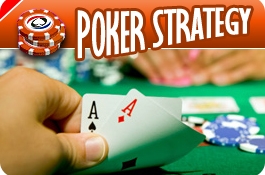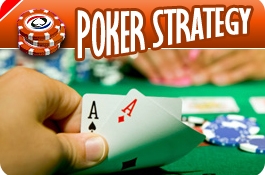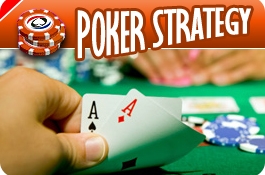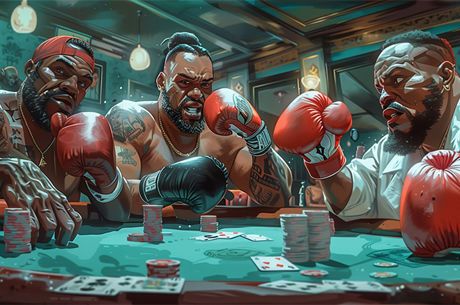Tournament Poker with Jeremiah Smith: To Flip or Not To Flip
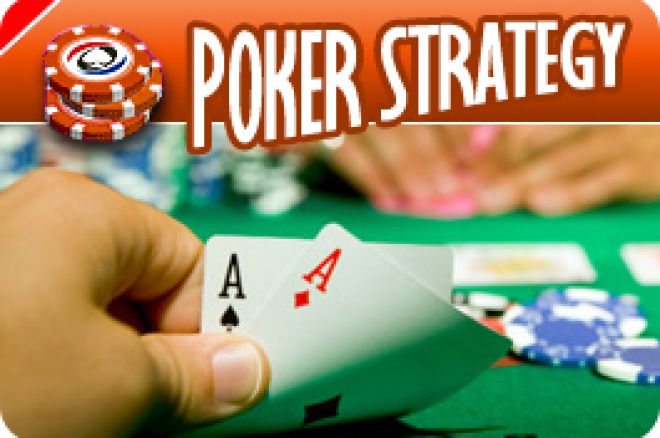
While understanding the eventual inevitability, most live pros do their best to avoid coinflips. Late on Day 2 of the $1,000 WSOP “stimulus special” I ran into Steve Sung during a twenty-minute break. Steve’s customary stoic appearance had been replaced by a wide-eyed expression of incredulousness. “I raised, he reraised, and the next thing I know I was all-in with queens… I hate flipping… I mean I just hate it.”
Judging by the look on his face, I assumed Steve had been eliminated. After a few years on the tournament trail, I knew I had to pick my next words carefully: “So you busted, eh?”
As it turned out, the look of astonishment was not the result of a painful elimination deep in a big tournament. Nor was it a result of an adrenaline rush from winning the unavoidable “classic race” against A-K. Instead, it simply came from the fact that with less than thirty people left he even found himself in a coinflip situation.
Using a very precise mathematical calculation that factors in my handful of years as a tournament reporter, I’ve witnessed somewhere around eleventy-million of these race situations. I’ve seen it all, from A-Q versus J-J to 10-6 versus 3-3 (yes, the guy with the 10-6 did claim to have put his opponent on threes… and yes, his all-in call was justified when 3-3 made a set that completed his four-card straight).
So, if they’re inevitable, unavoidable, and ultimately preordained by the poker gods, why do the poker pros that regularly compete for player of the year honors detest them so badly? A very short answer would be, quite simply, edges. Players like Steve Sung feel that flipping decreases their edge by increasing their variance. They play a style of poker dictated by position and pot control. While it may be a distant cousin of Negreanu-esque small-ball, it relies not so much on making hands after the flop as it does situational experience, both pre- and post-flop. This runs counter to a purely mathematical approach which dictates taking flips depending on an individual hand or pot dynamic, rather than viewing the tournament as a whole. That is to say, some players feel it’s always correct to take a coinflip if the pot odds are correct.
In a conversation just before the 2008 WSOP main event, bracelet winner Bill Edler shared some advice I could’ve used a few weeks earlier in the first $1,500 preliminary event. We were discussing the concept of chip value as it relates to tournaments. Bill was expanding an idea posited in a book on tournament poker when he stated, “The chips I lose have more value than the chips I win.”
Channeling the Barbara Walters in me, I continued the interview with a deeply profound, “Huh?”
While the situation Bill outlined was hypothetical, it was one I had both witnessed and participated in a number of times. With the blinds at 500/1,000 and an average stack of 50,000, let’s say you find yourself the chip leader with 100,000. An average-stacked player opens to 3,000 and you reraise with A-K to 10,000. The other player moves all in for 50,000 total. In the hypothetical situation, your opponent reveals that he has 9-9. From a purely mathematical standpoint, it’s correct to take this coinflip because you are only a very slight underdog and you already have 10,000 invested.
However, as Bill explains (and he later outlined in a tip from Full Tilt Poker), adding 50,000 to your stack would not really change the dynamics at your table. On the other hand, losing 50,000 would change everything. At a table of 50,000 stacks, there’s not much difference between 100,000 and 150,000. But there is a huge difference between 100,000 and 50,000; you’ve moved from being chip boss to an average stack if you lose the flip. Losing those chips would cost a significant amount of value whereas winning them adds very little relative to your table. You will only add 33% to your stack if you win, while losing would cost you 50%.
I have two instances from my own experience that come to mind when I consider this concept. A few years ago in a $1,000 tournament at the Bellagio, I had over a third of the chips in play when the final table started. In my typical chip-dusting fashion, I ended up in fifth place after trying to play table sheriff and bust the players who dared to reraise me, ultimately taking my 3-3 up against A-9 and losing. While there’s no guarantee I would’ve won the tournament, folding the 3-3 would’ve kept me in the chip lead and locked up a higher finish.
I repeated this mistake late on Day 1 of the first $1,500 prelim at the 2008 WSOP. After running my 3,000 starting stack up to a staggering 65,000 at dinner break, I lost some chips with A-J vs. Q-Q, threw away most of my stack with A-K, then busted with 9-9 in a race against A-J. Upon reflection, I realized that I was an okay poker player but a terrible gambler. If I didn’t accumulate those chips by racing and flipping, why should I start once I had the big stack?
There are other, more thorough explanations of these concepts in books about tournament poker. However, for this paper lion, it took a conversation with Bill Edler to blow some dust off the piles of equations and charts this concept was buried under. There’s a time in every tournament where your survival will come down to a heads-or-tails decision, but a skilled player maintains their edge by waiting for the right time and situation.

